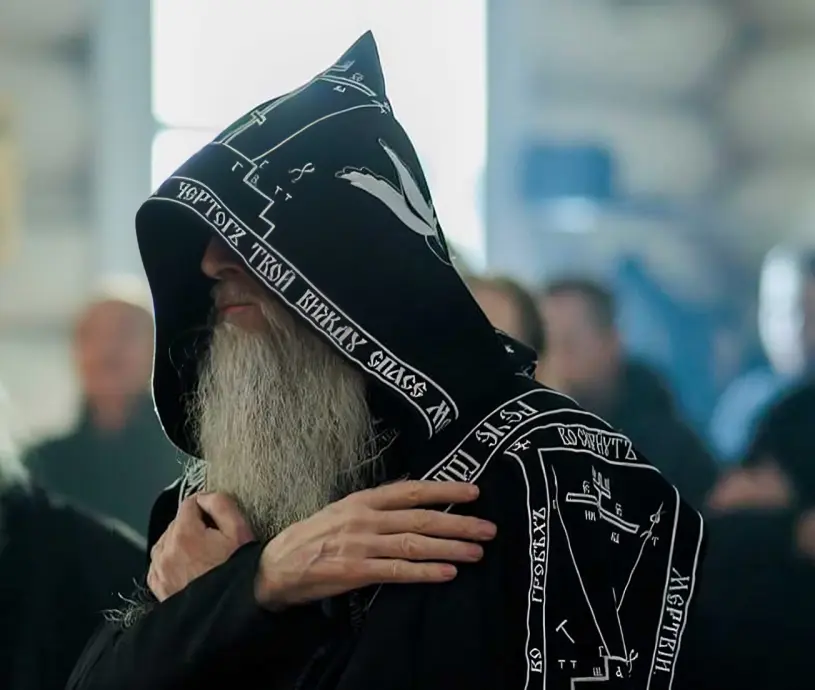Now Reading: Schema monk traditions in Orthodox Christianity
-
01
Schema monk traditions in Orthodox Christianity

Schema monk traditions in Orthodox Christianity
Monasticism holds special significance for Eastern Orthodox Christians. Within the ranks of monastic orders, the Schema Monk is considered the highest order of monasticism life. Schema monks are identified by their intense dedication to silent prayer and deep silence, and are believed to represent the ideal Christian journey towards holiness. For anyone in Australia interested in Orthodox traditions, whether for religious, cultural, or academic reasons, this article discusses the meaning, significance, and impact of schema monks within the Orthodox Christian world.
What is a schema monk?
A Schema Monk, or Schemamonk, is a Great Schema Monk who has reached the highest level of Eastern Orthodox monasticism. In this stage, you have to give up everything you own on Earth. This means living a strict life, praying all the time, and being completely devoted to God.
- A schema monk—sometimes called a Schemamonk or a monk of the Great Schema—is a monastic who has attained the most advanced spiritual rank within Eastern Orthodox monastic tradition.
- Not all are granted this title, as it is a spiritual achievement that many reach after staying in a monastery for decades; many of the faithful in the Orthodox Church view schema monks as elders or spiritual authorities.
The three stages of Orthodox monastic life
The Eastern Orthodox monastic life is structured. It’s easier to comprehend the schema monk once you know the path that leads to this spiritual rank.
1. Rassophore
- The first stage is when the beginner wears a simple robe.
- There is no need to keep the vows because they are not formal.
2. Stavrophore (Monk of the Cross)
- The monk receives a cross-shaped garment known as the paramand, symbolising their commitment to Christ’s path.
- There are official promises to be poor, chaste, obedient, and stable.
3. Great Schema (Schemamonk)
- The highest and holiest stage of monastic life.
- Includes vows that last a lifetime, symbolic clothing, and stricter traditions.
The powerful symbolism of the schema monk’s garments
A monk’s robes carry deep spiritual symbolism, reflecting sacred truths far beyond their outward appearance.
- Analavos: This garment stands out as unlike anything else. It is shaped like a cross and has religious motifs on it, such as skulls, spears, nails, and the cross of Christ. It makes the monk ponder how he will die to the world and become one with Christ’s suffering.
- Koukoulion: The koukoulion is a monastic hood, often adorned with embroidered crosses, worn in place of the traditional cap by monks.
- Polystavrion: A cord adorned with numerous small crosses, symbolising the spiritual burdens a monk willingly carries each day in remembrance of Christ’s crucifixion.
Monks wear these clothes all the time, even while they sleep, to remind them of their vows.
Life inside the Great Schema
A schema monk’s life is profoundly spiritual, silent, and secluded. Most monks live together, but schema monks often go even further into little cells or hermitages, where they pray all the time and don’t talk.
Their daily practices often include
- Long hours of Hesychasm, which is a type of silent, meditative meditation that uses the Jesus meditation.
- Fasting strictly and working hard
- No talking at all or very little talking.
- Cut off from worldly affairs, they submitted wholly to the direction of their spiritual mentor.
Other monks, even bishops, may ask them for counsel because they think that years of spiritual practice have made them more insightful.
Why is the schema monk so revered?
People say that the schema monk in Orthodox Christianity chose to live the “angelic life,” which means living for God instead of for oneself.
Here’s why they’re considered spiritually significant:
- They think that grace can transform everything.
- Their lives offer a model of faith and discipline for the wider community, not just monastics.
- Their example makes the whole Orthodox community stronger and encourages more faith and repentance.
- The profound faith and teachings of certain medieval monks have led to their recognition as saints.
Schema monks in the modern world
While schema monks have traditionally been linked to ancient monasteries in regions like Greece, Russia, Serbia, and the Middle East, their spiritual influence has gradually extended to places like Australia and beyond. In Australia, Orthodox Christian groups, especially those connected to the Greek and Russian Orthodox Churches, usually honour schema monks with icons, spiritual books, and prayer services. Some monks from Mount Athos or Serbia have come to Australia to educate people on how to pray and how to live a disciplined life as a monk.
The model monk’s example can be a great method for Australian Christians and those looking for spiritual growth to learn:
- The worth of being alone and thinking.
- How dedication and practice can change your life.
- The spiritual and historical depth of Orthodox Christianity.
Key facts about schema monks
1. Rank: Highest monastic order in Eastern Orthodoxy
Schema monks are the most important in Eastern Orthodox monasticism. Their calling is the highest level of spiritual devotion, the “angelic life”, that is completely devoted to God.
2. Vestments: Analavos, Koukoulion, Polystavrion
Monks who follow the schema dress very differently from regular monks. The analavos is a cross-shaped vestment, the koukoulion is an embroidered hood, and the polystavrion is a rope with many small crosses on it. The monk thinks about how Christ suffered and made spiritual promises.
3. Life: Solitary, silent, focused on prayer
Most of the time, schema monks live alone and spend their days in solitude, fasting, and praying. Their way of life shows that they have completely cut themselves off from worldly distractions to find serenity inside and get closer to God.
4. Purpose: Detachment for divine union with Christ
The main purpose of a schema monk is to give up things to progress spiritually. They stop worrying about worldly things and focus only on heavenly communion, to be holy and one with God.
5. Legacy: Spiritual leaders, often canonised as saints
Many people considered the monks as pious old men and spiritual gurus. They became saints in the Orthodox Church because of their deep understanding, magnificent lives, and strong faith. They are still honoured there.
Conclusion
The Schema Monk presents a glimpse into Orthodox monasticism for Australians interested in faith, spirituality, or the Orthodox Christian Church. They may not create headlines for their silent lives, but they speak volumes through their spiritual writings, humble example, and the echo of their prayers. For us, the Great Schema stands as a reminder that in a fast-paced world, there are still those who choose to live their lives more slowly, in prayer and with intention, seeking not earthly fame but eternal peace.













